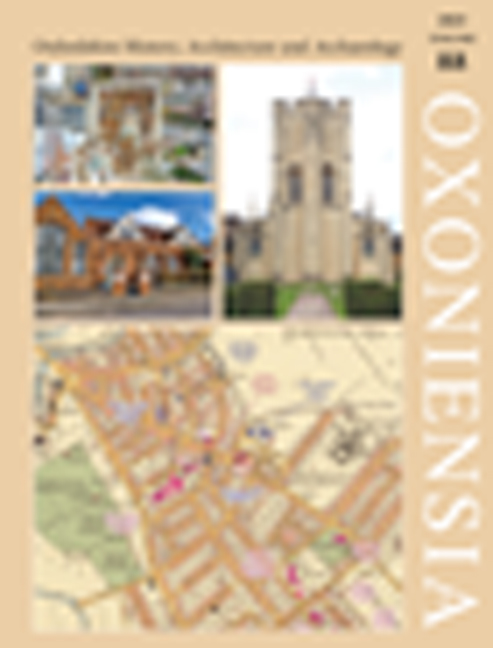A Nineteenth-Century Livery Stable and the Morris Garage Workshop: Investigations at the Morris Building, Longwall Street, Oxford
Published online by Cambridge University Press: 15 May 2024
Summary
Oxford Archaeology (OA) was commissioned by Austin Newport Ltd, on behalf of New College, to undertake an archaeological investigation ahead of development at the Morris Building on Longwall Street (Fig. 1). Following an earlier evaluation, an archaeological strip, map and sample excavation was carried out during the course of the groundworks between August and November 2017. This report summarises the main results of the excavation; the full report is available to download from the OA Library.
The area of development, formally a gravel courtyard to the rear of the Morris Building located at grid reference SP 5192 0645, encompasses an area of c.170 sq m. The site lies at about c.60.40 m above Ordnance Datum (OD). The site lay within the footprint of the defensive ditch of medieval Oxford. The extant thirteenth century city wall lies about 10 m to the south, immediately to the west of a bastion that formed the north-east corner of the town defences. It is believed to follow the line of the late Anglo-Saxon burh defences or its postulated eastward extension. During the thirteenth century or later a second line of stone defences were added, c.10 m in front of the town wall. Excavations undertaken by Brian Durham during earlier redevelopment of the former Morris Garage site revealed a 1.0-m thick stone wall corresponding with the southern boundary wall of the present site and a projecting bastion on its north-east corner, both constructed over the partially backfilled town ditch.
The maps of Agas (1578) and Speed (1610) depict the intact city walls and ditch but do not indicate the outer stone wall which is shown intact on Loggan’s map of 1675. It is speculated that the outer wall was repaired and the ditch to the north was recut during the Civil War, though by the time of Loggan the ditch had been infilled and both sides of the newly Holywell Street built up. The area of the site appears to have remained open until at least 1750 when Taylor shows the site as a garden with a small house on the Holywell Street frontage.
In the nineteenth century the land was occupied by the printing office of Jackson’s Oxford Journal with the rear of the site occupied by livery stables.
- Type
- Chapter
- Information
- Oxoniensia , pp. 365 - 372Publisher: Boydell & BrewerFirst published in: 2024

